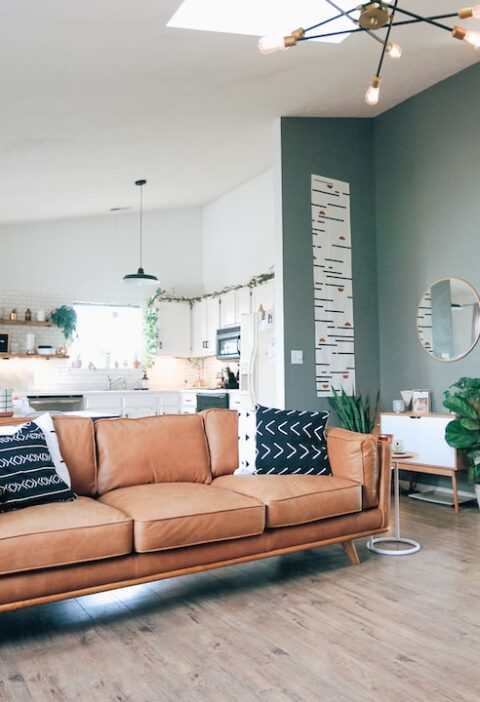Embarking on the journey to understand Special Disability Accommodation (SDA) takes us beyond the bricks and mortar, into the realm of transformative living spaces crafted to empower individuals with disabilities.
What is SDA Accommodation?
SDA accommodation refers to specialized housing for people with extreme functional impairments or very high support needs. It goes beyond mere accessibility features, aiming to provide a living environment that enhances independence and quality of life for individuals with disabilities.
Features of SDA Accommodation:
- Adaptability: SDA homes are designed to be adaptable, ensuring they can meet the evolving needs of residents as their conditions change.
- Accessibility: From ramps to wider doorways, these homes prioritize accessibility, making it easier for individuals with mobility challenges to navigate their living spaces.
- Assistive Technology: Integration of cutting-edge technology to assist residents in daily activities, fostering autonomy and reducing dependency.
- Proximity to Services: SDA homes are strategically located near essential services, healthcare facilities, and public transport for convenient access.
Who Benefits from SDA Accommodation?
SDA accommodation is tailored for individuals with the most profound disabilities, requiring a high level of support in their daily lives.
Eligibility Criteria:
- High Support Needs: Individuals requiring assistance with daily tasks, personal care, and other essential activities.
- Complex Health Conditions: Those with complex health conditions that necessitate specialized care and accessibility features.
- Approval by the NDIS: SDA accommodation is typically funded through the National Disability Insurance Scheme (NDIS), and eligibility is determined by the NDIS based on an individual’s needs.
The Impact of SDA Accommodation
Independence and Empowerment:
SDA accommodation is not just about providing shelter; it’s about fostering independence. By offering a tailored living space with the necessary support structures, individuals with disabilities can lead more autonomous lives.
Improved Quality of Life:
The design and features of SDA homes contribute significantly to an improved quality of life. The right environment can:
1. Enhance mental well-being
2. Promote social inclusion
3. Provide a sense of security
Reducing the Strain on Carers:
For families and carers of individuals with severe disabilities, SDA accommodation can be a game-changer. It lowers the physical and emotional strain on those caregiving.
The Challenges and Opportunities
Challenges in Implementation:
- Limited Availability: SDA accommodation can be scarce, with a growing demand often outpacing the available supply.
- Affordability: While funded through the NDIS, the affordability of SDA housing remains a concern for some individuals and families.
Opportunities for Growth:
- Innovative Design: Ongoing innovations in architectural design and assistive technology can pave the way for more cost-effective and scalable SDA solutions.
- Community Integration: Integrating SDA homes within existing communities fosters inclusivity and breaks down societal barriers.
Navigating the SDA Landscape: A Practical Guide
Understanding SDA accommodation is not just about awareness; it’s about equipping individuals and families with the tools to navigate this landscape effectively. Here’s a practical guide to help you navigate the SDA journey:
1. Engage with the NDIS:
Initiate conversations with NDIS planners to assess your eligibility and understand the available options. Clearly communicate your specific needs and preferences during these consultations.
2. Explore Available Designs:
Research existing SDA designs and innovations to get a sense of what might suit your requirements. Consider factors like adaptability, assistive technology integration, and community proximity.
3. Financial Considerations:
Understand the funding mechanisms under the NDIS for SDA accommodation. Explore financial assistance options and subsidies available for eligible individuals.
4. Visit SDA Homes:
Whenever possible, visit existing SDA homes to experience firsthand the features and functionalities. Talk to current residents to gather insights into their living experiences.
5. Advocate for Inclusivity:
Join advocacy groups and initiatives working towards promoting inclusivity and expanding SDA opportunities. Stay informed about policy changes and contribute to the conversation on improving accessibility and affordability.
6. Plan for Future Needs:
Consider the long-term aspect of your accommodation needs. Choose an SDA home that can adapt to evolving requirements, providing a sustainable solution for the future.
Breaking Down Myths: SDA Accommodation Unveiled
In the realm of Special Disability Accommodation (SDA), misconceptions and myths can cloud the understanding of this vital initiative. Let’s debunk some of these common myths and shed light on the reality of SDA accommodation.
Myth 1: SDA is Only About Physical Accessibility
While physical accessibility is a crucial aspect of SDA, it’s not the sole focus. SDA accommodation goes beyond ramps and wider doorways.
Myth 2: SDA Homes are Isolated from Communities
Contrary to the belief that SDA homes are isolated or segregated, many initiatives strive to integrate these accommodations within existing communities.
Fostering Community Awareness: The Role We Play
Here are actionable steps to contribute to a more informed and compassionate community:
1. Educate Your Circle:
Share information about SDA accommodation within your social circles, workplace, and local community. Dispel common myths and misconceptions, fostering a more accurate understanding.
2. Support Local Initiatives:
Engage with local organizations and initiatives dedicated to promoting accessibility and inclusivity. Volunteer or support events that raise awareness about the challenges faced by individuals with disabilities.
3. Promote Accessibility in Your Community:
Advocate for improved accessibility features in public spaces, businesses, and recreational areas. Encourage local businesses to adopt inclusive practices, making the community more welcoming for everyone.
4. Leverage Social Media:
Utilize social media platforms to amplify the voices of individuals with disabilities and share success stories related to SDA accommodation. Use hashtags and online campaigns to spark conversations and build a supportive online community.
Final Words
As we conclude our journey through the world of SDA accommodation, one thing becomes abundantly clear – it’s not just about structures; it’s about people. By understanding and advocating for SDA, we contribute to a future where housing is not a barrier but a bridge, connecting individuals with disabilities to a world that embraces them wholly.







